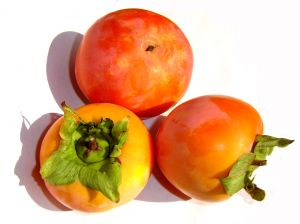Evening meals in varied weather
Here in the UK the weather is quite varied at the moment. It’s been mostly wet and cold for the time of year since Easter – around 15-18C. However every now and then we get a few days where it shoots up to the mid 20s, and a few days later its back down again.
The forecasts are unreliable and change by the hour so you assume if its nice it will probably be nice all day, but you always put a coat in and take a brolly just in case.
Consequently no-one knows what to wear – summer or winter clothes, and no-one knows what to plan in advance for their evening meal.
Its possible to plan a casserole the day before and then find its 25C and you don’t fancy it. And equally possible to plan a salad and for the weather to turn and go cold.
So here are my top tips for being prepared for any weather, turning a hot meal into a cold one and vice versa.
Quick and easy summer meals:
- Keep burgers, sausages and bread rolls in the freezer to do a quick grill or barbecue
- Keep bags of prepared salad in the fridge, and serve with new potatoes or potato salad, cheese, hard boiled eggs or cold meats from the deli.
- Turn a starter into a light main meal – smoked salmon or prawns with avocado and salad, or pate with cold toast and salad.
- Put a seasoned chicken breast in the oven for 25 minutes, with some vegetables to roast – bell peppers, onion and mushrooms and serve with salad.
Quick and easy winter meals:
- Keep a jar of curry paste and tinned tomatoes and natural yogurt in. A quick chicken and veg curry can be made using the recipe on the jar.
- Cauliflower cheese is a nice warming filler, and can be made as a side vegetable, or into a main meal with other vegetables and pasta added.
- Make extra when you make a shepherd’s pie or lasagne – the extra portions make a quick warming meal another day and can be reheated in a microwave.
- Keep a Fray Bentos pie in the cupboard. They keep for ages, as they are in a tin, and can be served with vegetables of any kind. Not the healthiest, but okay as a one off.
Turning a winter meal into a summer one:
- Planning on grilling or stewing a meat dish? Stick it on the barbecue or grill instead. Your vegetables can be made into vegetable kebabs.
- Planning on cooking chicken breasts or thighs, or in a stew or casserole? Instead chop them in slices and make stir fry or fajitas.
- Planning on making bolognese or lasagne? Make burgers, or spicy tacos with the minced meat instead.
- Planning on steak and chips with a heavy sauce? Make steak and salad with buttered new potatoes.
- Planning a roast dinner? Cook it earlier in the day and serve cold with salad and new potatoes. Or pick up a hot rotisserie chicken from the deli if you can’t bear to have your oven on.
- Planning a pasta bake? Make it a cold pasta salad.
If you want to turn a summer meal into a winter one, just swap those ideas round!
How do you deal with the variable weather when meal planning?
Tags: summer, winter







